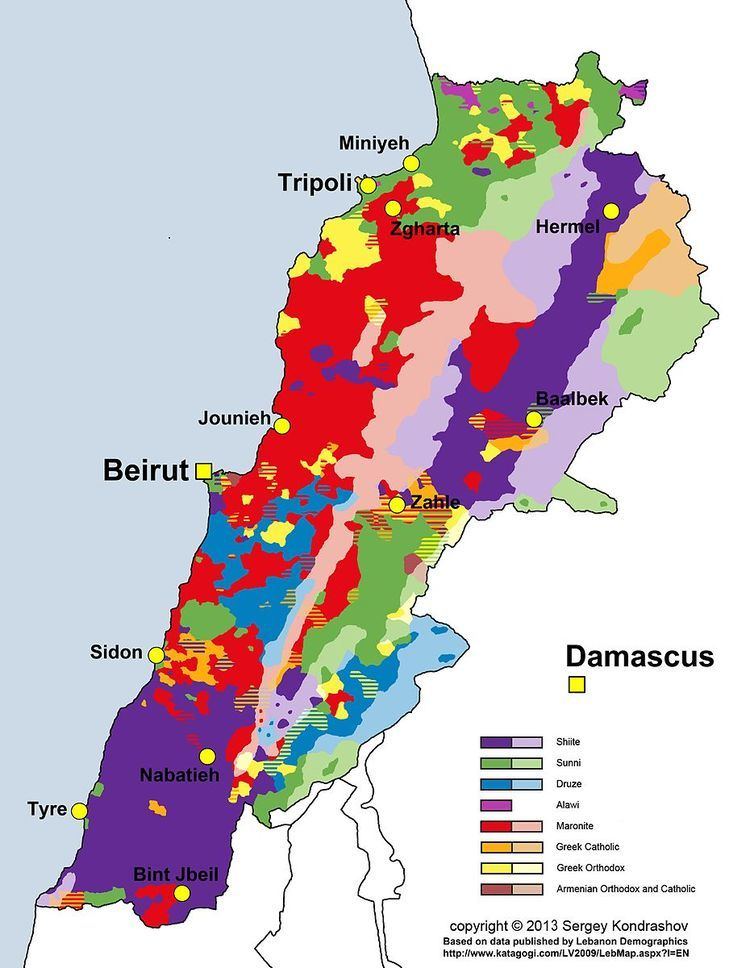 | ||
Islam in Lebanon is followed by 59.5% of the country's total population: Shia's make up 27%: Twelvers are the predominant Shia group, followed by Alawites and Ismailis. Sunnis make up also 27%: Sunnis are mainly of the Shafi'i madhhab with pockets of Hanafi and Hanbali. Several large Sufi orders are active in the country, including the Naqshbandi tariqa, and Qadiriyya.
Contents
Although not traditionally considered as Muslims, the Druze make up 5.6% of the total population, which under the Lebanese political division (Parliament of Lebanon Seat Allocation) the Druze community is designated as one of the five Lebanese Muslim communities (Sunni, Shia, Druze, Alawi, and Ismaili).
Demographics
The number of Muslims in Lebanon has been disputed for many years. There has been no official census in Lebanon since 1932. According to the CIA World Factbook, the Muslim population is estimated at around 59.5% within the Lebanese territory and of the 8.6–14 million Lebanese diaspora is believed by some to be about 20% of the total population.
The last census in Lebanon in 1932 put the numbers of Muslims (Shia 20%, Sunni 22%, Druze 7%) at 49% of the population (388,400 of 791,700). A study done by the Central Intelligence Agency (CIA) in 1985 put the numbers of Muslims (Shia 41%, Sunni 27%, Druze 7%) at 75% of the population (1,667,000 of 2,228,000).
Branches
Lebanese Muslims are divided into many branches like Shiites, Sunnites, Druze, Alawites, and Ismailis.
Shia Islam
The Lebanese Shia Muslims are around 27%–29% of the total population. Twelvers are the predominant Shia group, followed by Alawites and Ismailis. The Speaker of Parliament is always a Shi'a Muslim, as it is the only high post that Shi'as are eligible for. The Shiites are largely concentrated in northern and western Beqaa, Southern Lebanon, in south Beirut (southern parts of Greater Beirut), Tripoli and Akkar region.
Sunni Islam
The Lebanese Sunni Muslims constitute also about 27%–29% of the total population. Sunni notables traditionally held power in the Lebanese state together, and they are still the only ones eligible for the post of Prime Minister Sunnis are mostly concentrated in west Beirut, Tripoli, Sidon, Central and Western Beqaa, and Akkar in the north.
Druze
The Lebanese Druze constitute 5% of the population and can be found primarily in Mount Lebanon and the Shouf District. which under the Lebanese political division (Parliament of Lebanon Seat Allocation) the Druze community is designated as one of the five Lebanese Muslim communities (Sunni, Shia, Druze, Alawi, and Ismaili).
